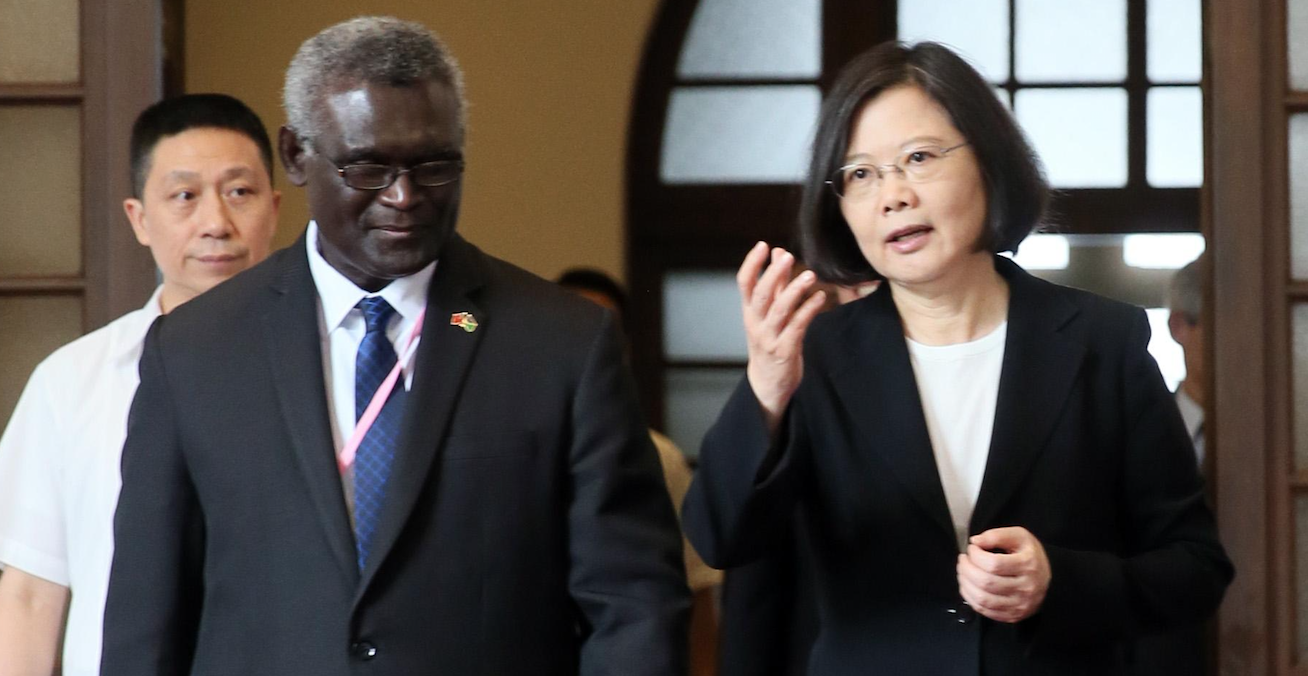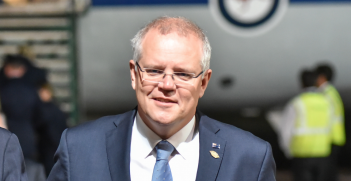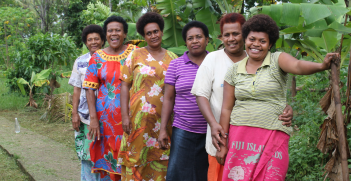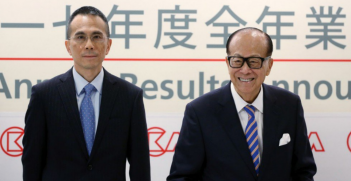Can China Be a “Responsible” Actor in the Pacific? Some Implications for Australia

The Solomon Islands is coming under pressure to shift its diplomatic recognition from Taiwan to China. In an interview with the ABC, Prime Minister Manasseh Sogavare admitted that his country is being pressured to recognise Beijing, but that there is an equally strong push for the Solomons to stick with Taiwan: especially from Australia.
With Prime Minister Scott Morrison’s “Pacific Step Up” strategy and the unveiling of a new Australian Infrastructure Investment Facility for the Pacific, the battle for influence between Australia and China in the Pacific would appear to be heating up. But while Canberra has been less than coy about Australia’s desire to counter Chinese money and influence in the region, Beijing has been less explicit in its intention to engage in such a battle. In China, there seems to be a degree of confusion as to why Australia sees China as a threat in the Pacific, why “win-win cooperation” isn’t possible.
Aid has undoubtedly been used as a tool to leverage influence in the region. Accompanying a growth in development assistance from the United States to Pacific Island countries, Australia has seen its aid budget to the Pacific rise in 2018 by 18 percent from the previous year. Most recently, Morrison announced a bilateral infrastructure program for the Solomon Islands, which is slated to provide up to $250 million in grant financing over 10 years.
While the provision of development aid serves as a clear indication of a government’s political interests and intentions, investment can be an equally important indicator and medium of geopolitical influence, even if commercial interests do get thrown into the mix and can end up muddying the water at times. But even though Australia has had a long history of commercial engagement with the Pacific, criticisms of Australian mining projects are rife and the history is a very checkered one. The case of the infamous Bougainville’s Panguna copper mine, which was shut down in 1989 by civil war, comes to mind here. Alongside accusations of Australian “paternalism,” the sociopolitical and environmental costs of these mining operations have invariably tarnished Australia’s reputation in the region.
Enter the Chinese. China and, more specifically, Chinese investors tend to depict themselves as latecomers to the Pacific — and also to other parts of the world — and are popularly perceived as coming with the promise of “easy” financing and a non-interventionist attitude. Despite Huawei’s thwarted attempt to close a deal with the Solomon Islands to construct the underwater cable project, Chinese commercial interest in the region is only set to grow. Exploring new markets and expanding their commercial portfolio — if not Beijing’s political reach as well — arguably remain the raison d’être of both Chinese state-owned and private companies. Indeed, one is reminded of reports from 2013 when a Chinese company had failed in its attempt to gain — illegal — access to the Panguna mine.
It goes without saying that Chinese investment overseas has attracted plenty of censure and, at times, outright local opposition. This is especially true of projects in the resource sectors of developing countries with lax regulatory standards. However, given the Chinese government’s efforts over the past years to institutionalise new regulatory mechanisms to monitor the flow of Chinese money as well as guidelines to improve the conduct of Chinese companies abroad, this begs the question: is there any hope of Chinese investors becoming more “responsible?”
The Gold Ridge Mine as an Experiment in Chinese Corporate Responsibility?
The Gold Ridge Mine, located in central Guadalcanal, has had a troubled history of operations since 1998. As the only gold mine in the Solomon Islands, it was closed in 2014 when severe flooding and consequent fears of toxic water from the mine’s tailings dam overflowing and contaminating local water supplies ultimately led Melbourne-based company, St. Barbara, to — amid some political controversy — sell the mine to local landowners Gold Ridge Community Investment Ltd. (GCIL), for $100 in 2015.
Initially, Australian company Frontier Resources Ltd. had signed a Heads of Agreement with GCIL to acquire an 80 percent interest in the mine, with 20 percent remaining with GCIL in mid-2015. However, shortly thereafter, an announcement was made by Frontier that GCIL had not negotiated in good faith or exclusively with Frontier, thus ending negotiations.
In 2017 a Chinese-owned, Australian property company, AFX Gold Ridge Pty Ltd., announced that it had secured an additional investor, Hong Kong-listed Wanguo International Mining Group, to begin recommissioning the Gold Ridge mine immediately. Crucially, the partnership arrangement was partially carried over from the early Frontier agreement, with GCIL retaining 10 percent of Gold Ridge Mining Ltd. and AFX Gold Ridge possessing the remaining 90 percent. As a Chinese investment project, such an arrangement with local landowners is rather unprecedented. Indeed, some observers have already noted how this “new model” has a potential to serve as an exemplar of local consultation and partnership, as well as a means to generate more sustainable revenues for an impoverished region. Accordingly to one account from late 2017, ‘at this stage, [the new venture] comes across as more than ticking the right boxes…there is evidence of an attitudinal shift, a genuine motivation to alter the structure of power, participation and accountability’. Along similar lines, GCIL chairman Walton Naezon had noted early on that they were “going to make sure that our foreign partners are listening to us.” Given the poor track record of Chinese private firms in engaging with local stakeholders, particularly in the natural resource sectors, this arrangement is noteworthy and, if proven successful, could also mark a new form of corporate social responsibility for Chinese companies.
Even so, it is important to temper current expectations. While represented, GCIL owns only a 10 percent stake. As such, this casts some doubt as to the extent to which local grievances will be heard and local voices will be able to influence the decision-making process. Especially considering how Chinese investors tend to engage more with state actors and favour preferential treatment by local elites, there is a lingering possibility that this innovative partnership may, in fact, be more of an experiment in risk mitigation for a conflict-prone investment. In fact, recent reports are suggesting how, having reopened in May 2018, the mine is providing employment opportunities for locals, but that work safety standards appear to be lower than before. According to a New York Times piece, a monitor sent by local tribes reportedly said that employees often do not wear the necessary safety gear, such as boots and goggles, and that some tasks requiring close monitoring are no longer monitored. There is also a more fundamental concern that the landowner company, at the end of the day, may be comprised of representatives who do not adequately represent local interests.
Implications for Australia’s Pacific Engagement
The Gold Ridge Mine is one example of the wave of new Chinese commercial investment in the region, against which Australia’s Pacific Step Up is partially expected to counter. That said, unpacking these trends against the broader development context of Pacific Island countries raises some issues that Australia also needs to consider with respect to its own regional strategy.
The challenges of converting mining revenue into sustainable development are well-known to the Pacific. The clash between customary land ownership and Weberian law is a longstanding one that has undermined local support for the extractive industries. In reviewing the legal framework for mining in the Solomon Islands, researcher Graham Baines has concluded that the island-state is not yet ready to support a sustainable mining operation. Indeed, during the Gold Ridge mine’s previous periods of operation, the Solomon Islands government admitted to how royalty payments had been largely spent on consumable items. Not only was nothing saved and finite gold resources expended, but no wealth for future generations was created: an otherwise crucial element of sustainable mining. In light of this history, and despite its promising partnership structure, it’s still too early to tell whether Gold Ridge mine 2.0 will be able to deliver on its promise of greater responsibility and transparency.
It is crucial that neither Australian companies, nor the Australian government, seek to compete with Chinese companies in a race to the bottom that would adversely and, possibly, irreparably damage the social and environmental welfare of its Pacific partners. Rather than pumping money into large infrastructure and resource schemes, Australia’s primary focus should be on assisting Pacific governments to develop the sound regulatory frameworks and monitoring capabilities needed for translating mining revenues for sustainable development in the region. Doing so would realise our stated desire to constructively engage the Pacific in a manner that continues to reflect our own values.
Dr Pichamon Yeophantong is an Australian Research Council Fellow and senior lecturer at UNSW Canberra
William Hicks is a graduate of UNSW Canberra where he completed a Bachelor of Arts, majoring in History and Politics as part of their research program.
This article is published under a Creative Commons Licence and may be republished with attribution.





